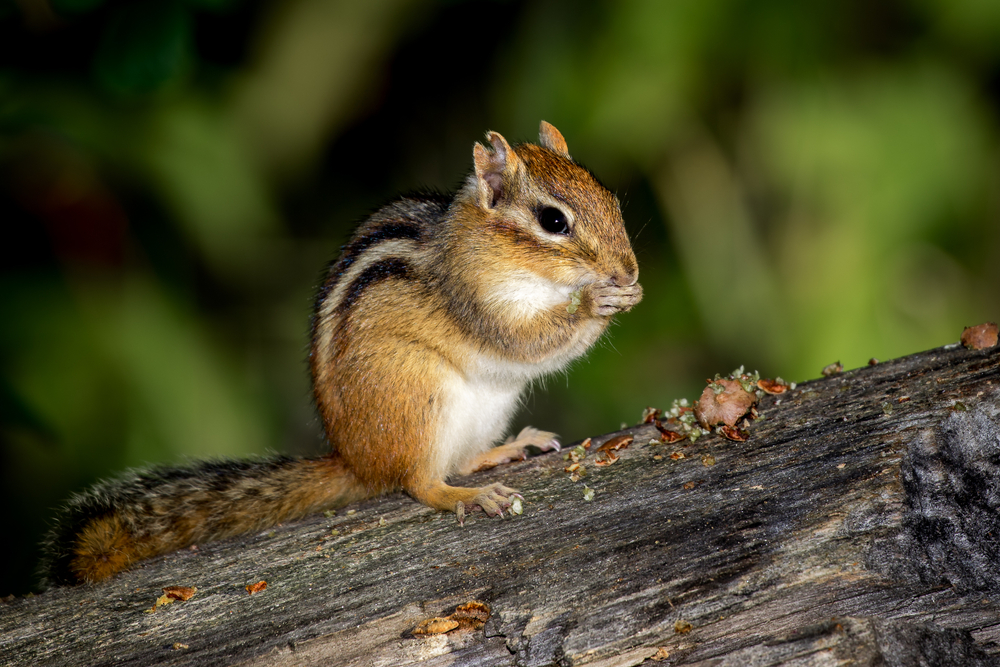
Eastern Chipmunk (Tamias striatus)
Rodent/Squirrel Family
When rescuing small wild animals, it’s a good idea to wear gloves. Be aware, however, that gloves provide only a small amount of protection, and that most mammals can easily bite through them. Raccoons, skunks, bats and some foxes are more likely than other mammals to carry rabies, but any wild animal may carry the disease. There are a number of other serious or fatal diseases that can be transmitted to humans, so you must take care that the animal doesn’t bite you.
Physical characteristics:
Brown/Gray/White/Black with alternating light and dark stripes along their cheeks and backs. They have stubby legs and bushy tails.
Average of 7-8.5 inches, up to 11 inches
Weighs up to 4.5 ounces
Lifespan: average 3 years
Habitat: Plains, mountains, forests, deserts, suburban and urban areas where there is enough cover to protect it.. They prefer to live alone in holes or burrows/dens. They often choose logs or bushes and sometimes create underground tunnels that can be 10-30 feet long and approximately 3 feet deep.
Diet: Omnivore- insects, nuts, berries, seeds, fruit, grain, mushrooms, bird eggs, snails, frogs. They stuff food into their cheek pouches and carry it to their burrow or nest to store
Family life: Chipmunk young are born in late spring and again in the fall. The young (pups) are born blind and hairless and stay in the nest for up to six weeks. Typically there are 1-2 litters per year with 4-5 babies per littler.
Predators: raptors, snakes, foxes, bobcats, raccoons, rats, and coyotes. Similar to opossums, a chipmunk will play dead in order to elude a predator.
Other Significant Threats: cats, dogs, humans
Special considerations/Interesting facts: Excellent tree climbers and swimmers; they have 4 toes on their front feet and 5 toes on their back feet. They are most active between dawn and dusk. They sleep for extended periods of time in cold weather to conserve energy but wake up to eat from their food cache. A single chipmunk can gather up to 165 acorns in a day. They make various sound to communicate. They help the environment by dispersing seeds of the organisms they eat.
